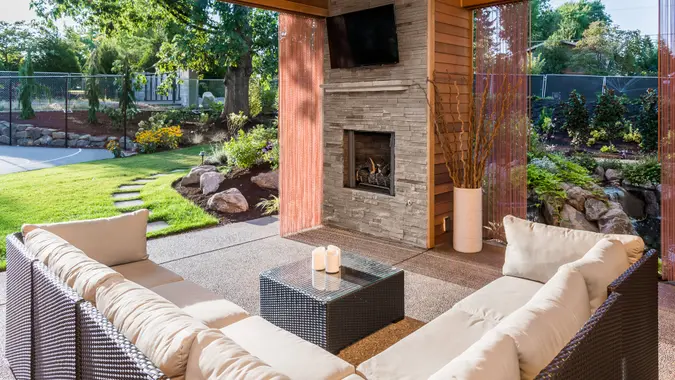We’re Real Estate Agents: These Are the 8 Florida Cities a $400K Budget Can’t Afford

Commitment to Our Readers
GOBankingRates' editorial team is committed to bringing you unbiased reviews and information. We use data-driven methodologies to evaluate financial products and services - our reviews and ratings are not influenced by advertisers. You can read more about our editorial guidelines and our products and services review methodology.

20 Years
Helping You Live Richer

Reviewed
by Experts

Trusted by
Millions of Readers
Not long ago, a $400,000 budget could get you a comfortable home in many Florida cities. But with more than 1 million people moving to the Sunshine State since 2020, that same budget barely gets you in the door — literally.
With rising demand, limited inventory, pricey mortgages and increasing property insurance costs, many of Florida’s most desirable cities have seen median home prices climb past the $400,000 mark, making it harder for buyers to find move-in-ready homes in their price range.
Here are eight cities where $400,000 no longer stretches as far as it used to.
Bradenton
- Average home sale price: $435,500
Once a quieter alternative to Sarasota, Bradenton has become a sought-after destination for buyers looking for Gulf Coast charm without the premium price tag. However, as demand rises, so do home prices.
Why it’s expensive: The area offers a coastal lifestyle and proximity to amenities in Sarasota, Tampa and St. Petersburg at a more affordable entry point — though prices are catching up fast.
The downside: Flood insurance is getting pricey and hurricanes Helene and Milton damaged the area, making hurricane-proofing a priority.
Cape Coral-Fort Myers
- Average home sale price: $386,800
Cape Coral and Fort Myers have long been attractive for their Gulf Coast locations and laid-back lifestyle. While the median price is technically below $400,000, buyers at this price point are settling for smaller homes or fixer-uppers.
Why it’s expensive: Waterfront living, a surge in new construction and Florida’s low taxes continue to push prices higher.
The downside: Rapid growth has outpaced infrastructure development, leading to potential challenges with transportation, utilities and public services.
Clermont: From Hidden Gem to High-Priced Suburb
- Average home sale price: $440,000
Why it’s expensive: Many families are moving here to escape Orlando’s congestion while still being close to job opportunities.
The downside: Many homes need updates and homeowners association fees are climbing in newer developments.
Homestead: Gateway to the Keys
- Average home sale price: $485,000
Why it’s expensive: The area offers suburban living with access to Miami, making it a more affordable alternative for those priced out of the metro area.
The downside: Prices have skyrocketed due to high demand, but hurricane risks remain a concern.
Orlando: Entertainment and Tourism Capital
- Average home sale price: $388,100
Why it’s expensive: The city’s entertainment hubs, growing population and steady tourism revenue continue to attract new residents.
The downside: Buyers face a tough choice — older homes that may need updates or pricey new builds with high HOA fees. Property taxes and insurance are rising fast.
St. Petersburg: Sunshine City With Artistic Flair
- Average home sale price: $427,000
Why it’s expensive: It’s walkable, has cultural attractions and is flooded with new residents looking for coastal living without Miami prices.
The downside: HOA fees in new developments are sky-high, adding to the cost.
Sarasota: Coastal Elegance and Cultural Hub
- Average home sale price: $527,700
Why it’s expensive: Gulf Coast beauty, a vibrant cultural scene and an increasing number of affluent buyers have pushed prices higher.
The downside: High property taxes and soaring insurance premiums after Hurricane Milton add to the expense. Limited inventory means buyers may need to pay well above the asking price.
Tampa: Booming City on the Bay
- Average home sale price: $430,000
Why it’s expensive: A revitalized downtown, strong job market, and limited inventory have fueled intense competition, driving home prices up.
The downside: Many homes under $400,000 are outdated or need significant repairs.
 Written by
Written by  Edited by
Edited by 

























